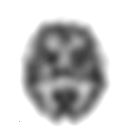
Photo from wikipedia
This study evaluates quantitative combined single photon emission tomography/computed x-ray tomography (SPECT/CT) to assess the influence of radiotracer concentration on detection of sentinel lymph nodes (SLN) in endometrial cancer (EC).… Click to show full abstract
This study evaluates quantitative combined single photon emission tomography/computed x-ray tomography (SPECT/CT) to assess the influence of radiotracer concentration on detection of sentinel lymph nodes (SLN) in endometrial cancer (EC). Eighty EC patients underwent pericervical 99m-Tc-nanocolloid injection followed by SPECT/CT. The subgroup of patients with failed SLN detection in SPECT/CT (n = 20) was compared to match-paired patients showing at least two SLNs. Results of intraoperative gamma probe measurements and quantitative SPECT/CT were used for comparison. In patients with detection failure, the percentage of injected dose, absolute activity, and volume of the injection site were significantly lower (30 ± 24% vs. 55 ± 19%; p = 0.01, 43 ± 36 MBq vs. 73 ± 33 MBq; p = 0.04, and 183 ± 164 mL vs. 266 ± 164 mL; p = 0.03) while mean activity concentration in liver, spleen, and bone marrow was significantly higher (p = 0.02). Activity concentration (>33 KBq/mL) and absolute activity (>73 MBq) of injection areas correlated with successful intraoperative SLN detection. In a subgroup of 19 SLNs, a correlation between SPECT/CT-derived uptake and intraoperative count rate was found (R2 = 0.8; p < 0.001). SLN detection in EC patients depended on high radiotracer activity at the cervical injection site. Quantitative SPECT/CT could predict successful intraoperative SLN detection and may help to optimize injection technique.
Journal Title: Diagnostics
Year Published: 2020
Link to full text (if available)
Share on Social Media: Sign Up to like & get
recommendations!